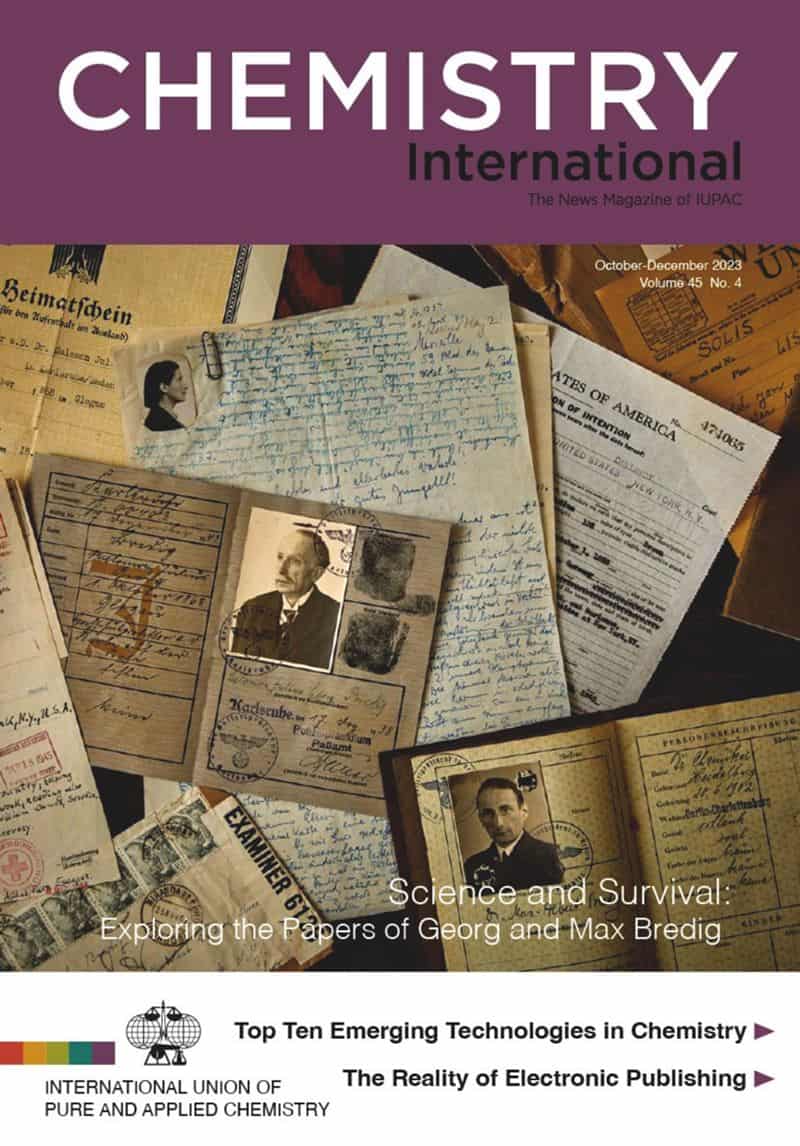IUPAC’s Top 10 Emerging Technologies in Chemistry
From wearable sensors to large language models and bio-recycling – these ten innovative technologies are shaping not only the world of chemistry, but the future of our planet.
Now in its fifth year, the IUPAC Top Ten Emerging Technologies in Chemistry are back, highlighting innovation across different disciplines towards clean energy, fuels, food and pharmaceuticals for all.
Detailed information about the “Top 10” can be found in IUPAC’s news magazine Chemistry International.
This year’s selection emphasizes the collaboration between chemistry and other scientific fields to bridge the gap between academia and industry, towards sustainability and a better society. Because chemistry is far more than the “central science”— it’s the “connecting science”.
1. Wearable Sensors
The COVID pandemic has accelerated the adoption of wearable sensors, reshaping our approach to health monitoring. Beyond tracking fitness and sleep, these devices provide real-time information on chemical, biological, and physical data. Notably, they enable the detection of various biomarkers, giving patients unprecedented power and freedom, and expediting disease diagnosis and treatments.

Spectroscopic methods such as fluorescence, Raman, impedance, and ultrasounds add new possibilities to measurements. Furthermore, innovations such as microneedles offer opportunities for detecting biomarkers and enabling direct drug-delivery in response to read-outs. All these developments, coupled with big data and machine learning, provide a low-cost, non-invasive alternative to traditional clinical tests, revolutionising healthcare in the era of multi-omics.
2. Photocatalytic Hydrogen
The photocatalytic production of green hydrogen could become a game-changer in the production of renewable energy and fuels, with potential applications in transportation, industry, and energy storage.
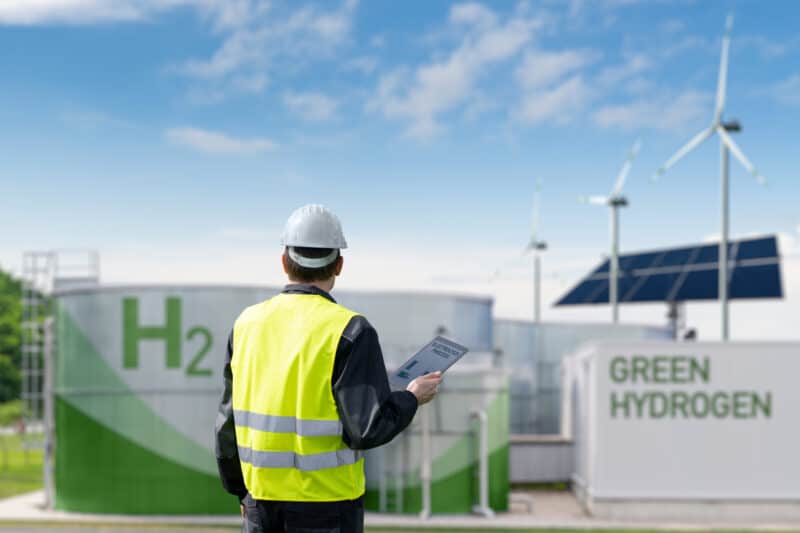
Although researchers are still solving challenges related to the reaction’s efficiency, scaling up production is promising, with pilot plants of 100 square metres already in operation. Moreover, the collaboration between chemists and biologists presents exciting possibilities, using enzymes and biological processes to generate clean hydrogen from renewable sources.
3. Chloride-Mediated Removal of Ocean CO2
For years, our oceans have served as a critical buffer to the climate crisis, absorbing a significant portion of carbon emissions and excess heat. However, it’s not an infinite solution, and excess carbon dioxide is acidifying seawater and harming marine ecosystems. Luckily, chemists have come up with an exciting technology – a novel approach to electrochemically remove excess carbon dioxide from seawater, using a cyclic chloride cycle that avoids the need for expensive equipment and is easily scalable.

Preliminary studies suggest this cost-effective carbon removal process could cost as little as $56 per ton of carbon dioxide — a promising plan to reduce and reverse the acidification of our oceans.
4. GPT Language Models in Chemistry
AI large language models (LLMs) like ChatGPT could revolutionise the way we approach chemistry research and education. Their incredible applications include predicting protein structures, reaction yields, and even automating robotic reactors and analyses.

Of course, not all that glitters is gold: less exciting applications of LLMs include fabricating fake research papers and peer-review reports. Nevertheless, ChatGPT models sometimes understand chemistry rules better than we do, and hold great potential for education, literature reviews, and information retrieval, freeing up time for students and professors to engage in more creative and constructive conversations.
5. Synthetic electrochemistry
Electrochemistry is currently experiencing a major renaissance in the chemical industry, marked by improved efficiency, and higher levels of chemo- and regio-selectivity in chemical transformations. Recent advancements include selective reduction reactions, the synthesis of ethers, Birch-type reactions, oxidation and fluorination of carbon–hydrogen bonds, and many other examples. Enhanced laboratory equipment, like ElectraSyn, has expedited efficient electrosynthesis and made it more accessible.

The field is closely connected to green chemistry, sharing key cornerstones such as high safety, reliability, and low energy consumption. Many industrial innovators, including 3M, Bayer, Johnson Matthey, La Roche, and Sandoz, have adopted sustainable electrosynthetic processes to reduce costs and cut carbon emissions.
6. Artificial muscles
Artificial muscles have had a remarkable journey – the concept dates back centuries to original ideas and sketches by Robert Hooke, but has only very recently become a reality. These cutting-edge developments, influenced by chemistry and materials science, have reshaped the fields of robotics, prosthetics, and healthcare.

The human-made fibres, which mimic myosin and actin, combine powerful polymers (electrically-responsive elastomers) and liquid crystals – all to enable functions such as actuation and locomotion. Applications range from revolutionary robotics to improved and more precise biomedical devices, overall enhancing the lives of patients and expanding possibilities in other sectors beyond healthcare.
7. Phage Therapy
One hundred years ago, scientists first envisioned the potential of bacteriophages (or, simply, phages) to combat bacterial infections and, ideally, other diseases. In recent times, there has been a resurgence of interest in phages for therapeutic purposes, leading to discoveries across various disciplines. For instance, chemistry has emerged as a key player in enhancing the properties of phages, employing techniques such as encapsulation to increase stability, availability, and targeted drug-delivery.
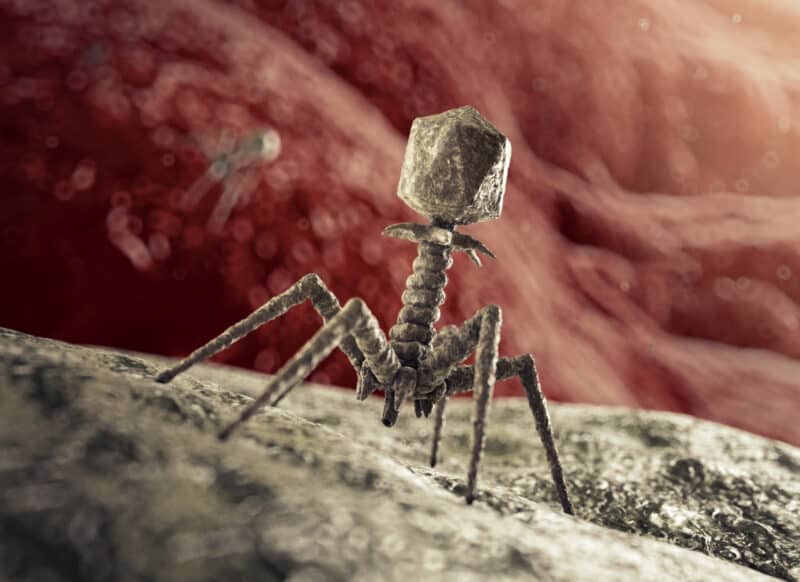
Beyond healthcare, phages have led to exciting discoveries in nanomedicine, proteomics, supramolecular chemistry, and materials science.
8. Biological recycling of PET
One of today’s biggest problems is plastic pollution – only 9% of the worldwide plastic production is properly disposed and recycled. Chemistry could come to the rescue, thanks to the discovery and characterisation of enzymes that naturally break down PET and other polymers and plastics into their basic building blocks. This bio-recycling reaction is revolutionary – it works with excellent yields, and PET retains its mechanical properties, contributing to circularity and ultimately reducing landfill waste.

This is one of the top 10 technologies closer to commercialisation, with the French chemical company Carbios considering building a plant to recycle 50,000 tonnes of PET per year (that’s 2 billion bottles!) by 2025.
9. Depolymerisation
Depolymerisation opens the door to various chemical recycling and upcycling processes as an emerging and effective solution for repurposing polymers, including PET, PP, polyamides, and polyurethanes. To stop plastic pollution, we must implement innovative techniques such as the rational design of polymers and recycling reactions to reuse monomers and plastic waste, transforming them into valuable resources.
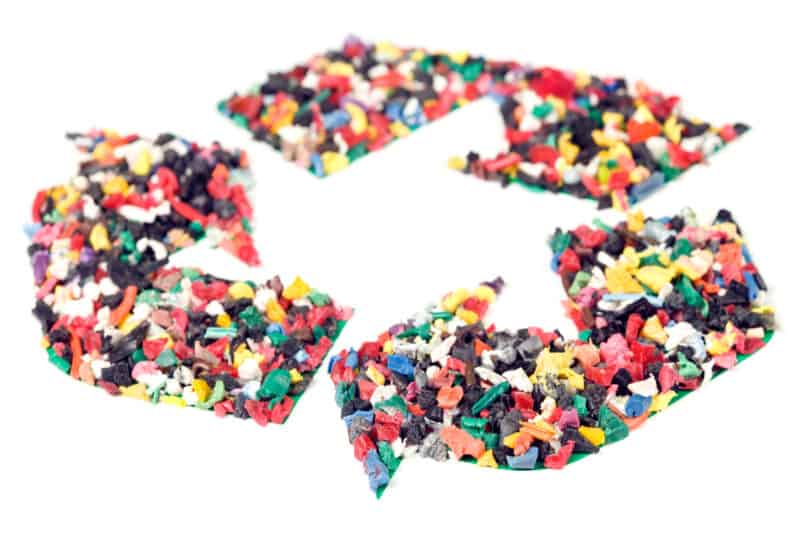
Chemical recycling and upcycling processes could potentially pave the way to a circular economy, and rational design and the reduction of additives will ensure that newly produced polymers and plastics are safe and sustainable. The adoption of policies such as REACH and digital product passports in the EU is already catalysing change towards a circular economy.
10. “Low-Sugar” Vaccinations
“Low-sugar” vaccinations are an innovative, early-stage technology that could increase the immune response and revolutionise the fight against viruses. The understanding of sugars, particularly glycans, has been pivotal in the development of drugs against viral diseases. In particular, trimming down the sugar coating of viral proteins has shown remarkable promise in vitro because it exposes relevant regions and triggers stronger immune responses.
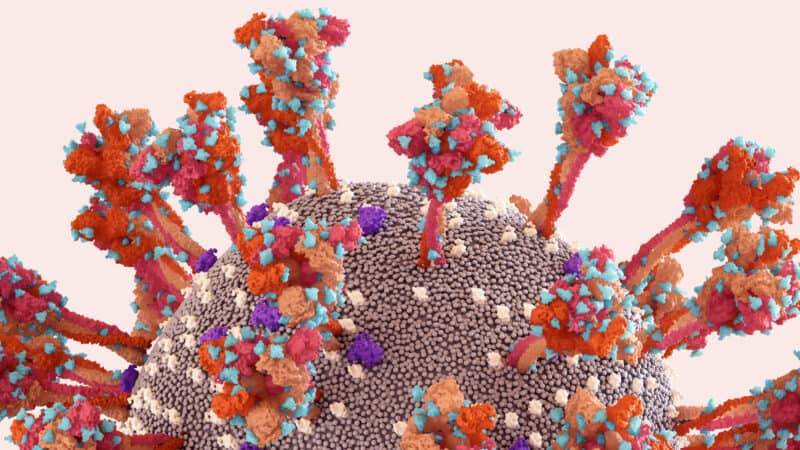
This approach could create more robust and broadly effective vaccines against SARS-CoV-2, HIV, and other viruses. Today, several biotechnology and pharmaceutical companies are considering conducting in vivo and clinical studies to catalyse commercialisation.
What’s Next?
Thank you for joining us for this year’s exploration of the IUPAC Top Ten Emerging Technologies!
The call for nominations for the 2024 list is already open, and we’re looking forward to hearing your ideas. How will the chemical sciences continue to change the world?
Learn more in this feature article
[Title image by Sharamand/iStock/Getty Images Plus]
